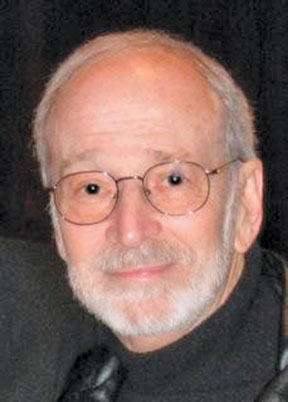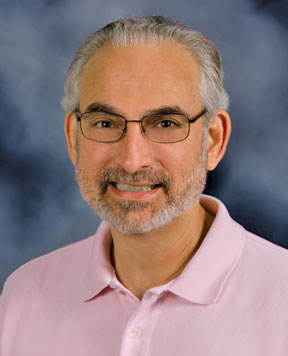The Spring 2008 edition of the EMC Society Newsletter
introduced the Society membership to the newly created Completed
Careers Committee. Bruce Archambeault, Don Heirman, Andy Drozd,
Don Sweeney and I comprise the committee. As chairman, I would
like to personally thank the committee for all the hard work that
was put in to taking a vision and turning it into a reality.
The goal of the committee is to make sure EMC Society members
who pass away are recognized and honored. In order for the committee
to be successful, though, it depends on our EMC Society Chapter
Chairs and general members to inform the committee when a local
EMC Society Chapter member or colleague has passed away.
The committee plans on recognizing and honoring the deceased in
several ways: by including a photo and biography of the individual
in the EMC Society Newsletter; including a photo of the individual
on a memorial poster that will be located outside the Awards Luncheon
hall at the annual IEEE EMC Symposium; having a moment of silence
for the individual at the Awards Luncheon; and by the President
of the EMC Society sending a personal letter of condolence to
the family.
To reiterate Bruce Archambeault’s request from the last
edition of the Newsletter, if you know an IEEE EMC Society member
that has recently passed away, please notify the committee so
they can be included in the next edition of the Newsletter. Please
send information to Bob Davis, robert.h.davis@lmco.com.
In this issue, we recognize with great respect Henry (Hank) Knoller.
In Memoriam: Hank Knoller 1933-2008
 Henry (Hank) Knoller’s engineering career began in the U.S.
Air Force where in 1952 he achieved the title of Electronic Specialist
from the AF Technical School at Scott Air Force Base. After leaving
the service, Hank obtained an AA degree from Santa Monica College
and later (1959) his Electrical Engineering degree from USC. In
1981, Hank became a California State Board of Registration registered
Professional Engineer.
Henry (Hank) Knoller’s engineering career began in the U.S.
Air Force where in 1952 he achieved the title of Electronic Specialist
from the AF Technical School at Scott Air Force Base. After leaving
the service, Hank obtained an AA degree from Santa Monica College
and later (1959) his Electrical Engineering degree from USC. In
1981, Hank became a California State Board of Registration registered
Professional Engineer.
Hank worked for several companies, beginning at Stoddart Aircraft
Radio Company in 1957 (later Stoddart Electro Systems), Solar
Electronics Company, Hallett Manufacturing Co., Electromagnetic
Sciences Company, Advanced Systems Research and Lockheed (later
Aeronautical Systems Company and subsequently Lockheed-Martin
Company).
Hank’s exposure and work in Electromagnetic Interference,
Compatibility, Electromagnetic Effects, Electro-Static Discharge
(ESD) and Lightning Effects had its seeds planted in the mid 50’s
and this continued through his later years.
At Stoddart he developed solid-state receivers, interference measurement
equipment and detection systems. At Solar Electronics, he developed
specialized current probes for measuring interference current
in the 20-100 Hz range. He had also done research, which led to
the development of a new concept in impedance measurement, commonly
referred to as the “two current probe line impedance bridge.”
He worked on the development of predictive interference models,
which are being used to this date. This experience resulted in
assignments on various aircraft and missile EMI programs, and
in 1968 it began his 23+ year career with Lockheed in the EMC
(Electromagnetic Compatibility) Group and later the E3 (Electromagnetic
Environmental Effects) Group which he developed and maintained
until his retirement from Lockheed. There he established ESD,
EMC, Lightning Protection, Electromagnetic Pulse (EMP) Hardening
and Interface Control Programs for aircraft and derivatives such
as the P-3, S-3, CP-140, C-130, C-141, “the RPV”,
F-117 and lastly the F-22. After his departure from Lockheed in
1991, Hank did consulting work for many companies including Advanced
Research in Pasadena and Solar Electronics, an EMC test equipment
manufacturer. Regrettably, because of their DoD classified nature,
including his efforts at the famous Lockheed “Skunk Works,”
many will never know of Hank’s extensive achievements.
Hank returned to Solar Electronics in 1992 to help in the development
of the CS116 Transient Generator. He remained at Solar Electronics
Company as a consulting design engineer until June 2008 when he
retired for health reasons. During his second time around with
Solar Electronics Company, Hank assisted in the development of
many new products to assist the EMI engineer. Hank had just completed
the design for a new CS106 Transient Generator when he retired.
With over 40 years of experience, Hank was widely published and
recognized internationally as an expert in his field. His expertise
was sought out not only throughout divisions of Lockheed-Martin,
but also by other companies which had come to know him through
his work at Lockheed, through consulting projects with major aerospace
and defense companies, Government agencies and from his many professional
presentations, publications and affiliations.
Hank took great pleasure in sharing his expertise with other engineers,
yet he was not one to seek out praise for his many contributions
to the field. He was a true engineer. Hank had mentored many young
engineers (including his son David), by stressing responsibility
and ethics as key elements to becoming a good engineer. He loved
traveling with his family, and he enjoyed the theater, music and
dancing to the tunes of the Big Bands. He will forever be missed
by all that have had the chance to work with him, including the
engineering community he had affected through his years of work
in the field.
Note: Mr. Davis wishes to acknowledge and thank the children of
Hank Knoller, David and Kimberly Knoller, as well as Hank’s
colleagues, Thad Drapala and Ray Talley, for their contributions
to this article. EMC
 Completed
Careers
Completed
Careers  Henry (Hank) Knoller’s engineering career began in the U.S.
Air Force where in 1952 he achieved the title of Electronic Specialist
from the AF Technical School at Scott Air Force Base. After leaving
the service, Hank obtained an AA degree from Santa Monica College
and later (1959) his Electrical Engineering degree from USC. In
1981, Hank became a California State Board of Registration registered
Professional Engineer.
Henry (Hank) Knoller’s engineering career began in the U.S.
Air Force where in 1952 he achieved the title of Electronic Specialist
from the AF Technical School at Scott Air Force Base. After leaving
the service, Hank obtained an AA degree from Santa Monica College
and later (1959) his Electrical Engineering degree from USC. In
1981, Hank became a California State Board of Registration registered
Professional Engineer.